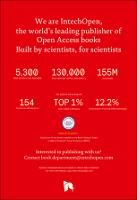Chapter Earth Observation Technologies: Low-End-Market Disruptive Innovation
| dc.contributor.author | García-Almiñana, Daniel | |
| dc.contributor.author | Huyton, Claire | |
| dc.contributor.author | Ghizoni, Leonardo | |
| dc.contributor.author | Traub, C. | |
| dc.contributor.author | Smith, Kate | |
| dc.contributor.author | Edmondson, Steve | |
| dc.contributor.author | Toshiyuki Abrao Oiko, Vitor | |
| dc.contributor.author | Sinpetru, Luciana | |
| dc.contributor.author | Kataria, Dhiren | |
| dc.contributor.author | Crisp, Nicholas | |
| dc.contributor.author | Chan, Y. | |
| dc.contributor.author | Dominguez, R. M. | |
| dc.contributor.author | Rodriguez-Donaire, Silvia | |
| dc.contributor.author | Villain, Rachel | |
| dc.contributor.author | Belkouchi, B. | |
| dc.contributor.author | Becedas, J. | |
| dc.contributor.author | Bay, Kristian | |
| dc.contributor.author | Morsbøl, Jonas | |
| dc.contributor.author | Romano, Francesco | |
| dc.contributor.author | Sureda, M. | |
| dc.contributor.author | Sierra, Eloi | |
| dc.contributor.author | Heißerer, B. | |
| dc.contributor.author | Outlaw, R. | |
| dc.contributor.author | Livadiotti, Sabrina | |
| dc.contributor.author | Roberts, Peter | |
| dc.contributor.author | Perez, J. S. | |
| dc.contributor.author | Schwalber, A. | |
| dc.contributor.author | Fasoulas, Stefanos | |
| dc.contributor.author | Conte, Alexis | |
| dc.contributor.author | Jungnell, Victor | |
| dc.contributor.author | Herdrich, Georg | |
| dc.contributor.author | Boxberger, Adam | |
| dc.contributor.author | Haigh, Sarah J. | |
| dc.contributor.author | Lyons, Rachel | |
| dc.contributor.author | Worral, Stephen D. | |
| dc.contributor.author | Gonzalez, David | |
| dc.date.accessioned | 2021-06-02T10:13:00Z | |
| dc.date.available | 2021-06-02T10:13:00Z | |
| dc.date.issued | 2020 | |
| dc.identifier | ONIX_20210602_10.5772/intechopen.90923_464 | |
| dc.identifier.uri | https://library.oapen.org/handle/20.500.12657/49350 | |
| dc.description.abstract | After decades of traditional space businesses, the space paradigm is changing. New approaches to more efficient missions in terms of costs, design, and manufacturing processes are fostered. For instance, placing big constellations of micro- and nano-satellites in Low Earth Orbit and Very Low Earth Orbit (LEO and VLEO) enables the space community to obtain a huge amount of data in near real-time with an unprecedented temporal resolution. Beyond technology innovations, other drivers promote innovation in the space sector like the increasing demand for Earth Observation (EO) data by the commercial sector. Perez et al. stated that the EO industry is the second market in terms of operative satellites (661 units), micro- and nano-satellites being the higher share of them (61%). Technological and market drivers encourage the emergence of new start-ups in the space environment like Skybox, OneWeb, Telesat, Planet, and OpenCosmos, among others, with novel business models that change the accessibility, affordability, ownership, and commercialization of space products and services. This chapter shows some results of the H2020 DISCOVERER (DISruptive teChnOlogies for VERy low Earth oRbit platforms) Project and focuses on understanding how micro- and nano-satellites have been disrupting the EO market in front of traditional platforms. | |
| dc.language | English | |
| dc.subject.classification | thema EDItEUR::R Earth Sciences, Geography, Environment, Planning::RB Earth sciences | en_US |
| dc.subject.other | disruptive innovation, low-end market, micro- and nano-satellites, new space, Earth Observation | |
| dc.title | Chapter Earth Observation Technologies: Low-End-Market Disruptive Innovation | |
| dc.type | chapter | |
| oapen.identifier.doi | 10.5772/intechopen.90923 | |
| oapen.relation.isPublishedBy | 09f6769d-48ed-467d-b150-4cf2680656a1 | |
| oapen.relation.isFundedBy | H2020-FETOPEN-1-2016-2017 | |
| oapen.grant.number | 737183 | |
| oapen.grant.acronym | DISCOVERER |

